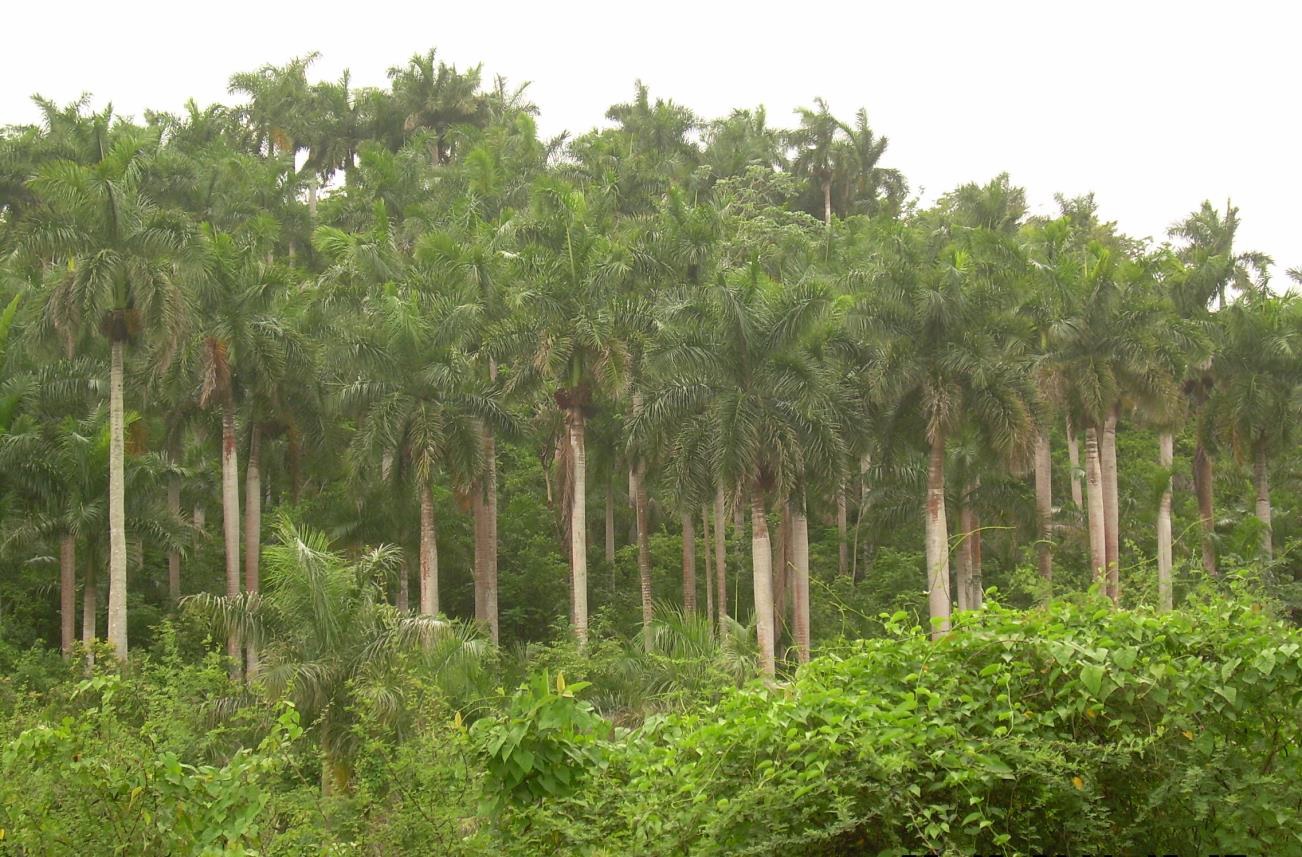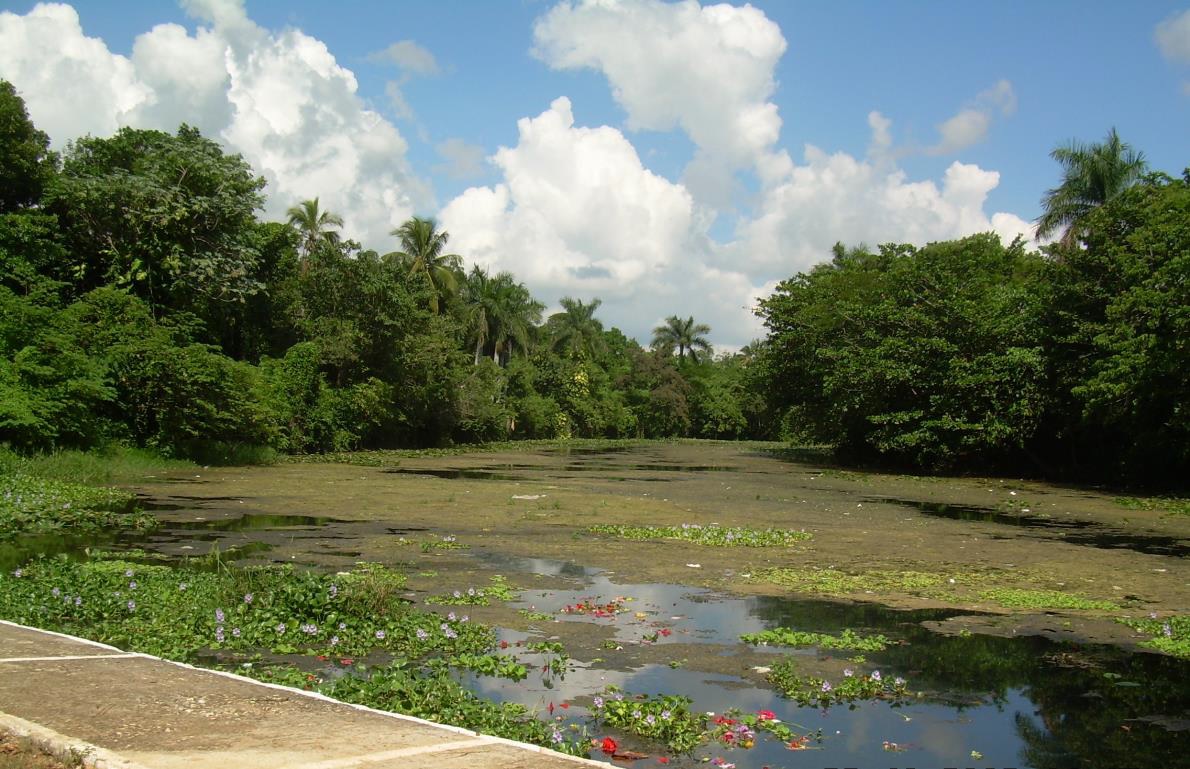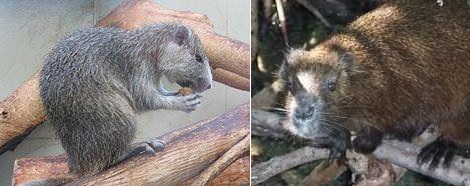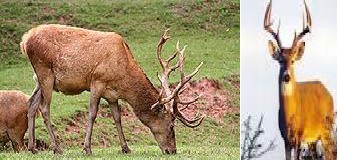FLORA AND VEGETATION

Image 1.Evergreen forests in the Sierra del Rosario.
The vegetation that predominates in the province is related to the vegetation of plantations and pastures for livestock that characterizes the landscape of the plains of the territory, so the original vegetationwas practically extincted, giving way to the development of anthropic vegetation.
- Crop vegetation predominates in the Southern Karst Plain with some pasture spaces for the big cattle, while in the Northern Coastal Plain and in the Southern Alluvial Plain, the grazing areas for the big cattle predominate with intercalation of spaces for agricultural crops.
- The forested areas of the province occupy the smallest territorial space and are located on the southern coast, in elevations such as heights or hills and in the low mountains of the Sierra del Rosario, as well as on the banks of some rivers that run through the plains.
In the “Sierra del Rosario”: The largest forest mass in the province is found, predominantly the evergreen broadleaf and semi-deciduous forests with 50% endemism, while in the “Pan de Guajaibón” the vegetation is “mogotes” where the BOMBACOPOSIS CUBENSIS or “Ceibón” is found . Endemic plant species such as orchids are found in this mountain range.

Image 2. Orchids On the northern slopes of the mountain range, near the Cajálbana plateau, there are pine forests, both male and female pine, which are endemic.
Image 3.Pine forests in the Sierra del Rosario,Pinuscaribaea or Male Pine.
Image 4.Pine trees in the Sierra del Rosario,PinusTropicalis or Female Pine.
Image 5.MICROCYCAS CALOCOMA or Cork Palm in its natural environment and in a garden. The MICROCYCAS CALOCOMA or Cork Palm is in the western part of the mountain range. Distribution of Cork Palm in theGuaniguanico Range, occupying only the western portion of the Sierra del Rosario.
On the northern and southern flanks of the mountain range, as well as in its center, there is a secondary vegetation of forests, bushes and grasslands, as well as spaces of natural savannahs, pastures and fields of crops.
In the Mesa de Anafe the vegetation is that of“mogotes”. One of the endemic species of the Mesa de Anafe is the BOMBACOPOSIS CUBENSIS, although on its north flank there is a vegetation of secondary forests, scrubs and palm groves.
On its southern flank the vegetation is of evergreen forests of broadleaves and semi-deciduous forests with large forests of royal palms.
Image 6. Palm forest on the north flank of the Mesa de Anafe.
In Mariel Heights, the vegetation is of secondary forests with thickets and grasslands.
Image 7.Forests of secondary vegetation in Mariel Heights.
Gallery forests grow on the banks of some rivers in the province. Aquatic vegetation can be seen in rivers, dams and reservoirs where the waters have a slow flow or are stagnant due to the abundant organic decomposition.
Image 8. Gallery forest on the banks of Ariguanabo river.

Image 8.1. Aquatic vegetation in the Ariguanabo river.
On the south coast, predominantly on the banks of the southern Alluvial Plain, there are mangrove forests as well as on the north coast on the stretch of Ensenada de La Mulata to Punta de La Gobernadora.
The ecosystem of low and swampy coasts such as that of the southern coast has five parallel lines of vegetation that are:
- In direct contact with the sea is the line of the red mangrove.
- Behind the blackish mangrove.
- Parallel to the previous one is the “pataban”.
- Later the “llana”.
- Inland the grasslands, alternating with “Guano Prieto” and “Guano Cano” palm trees.
Along the south coast, the endemic species that is distinguished is the PSILOTUM NODUM.
Fauna of the province. Land fauna communities in the province.
Almost the entire province has anthropogenic fauna, that is, animals brought to Cuba from other regions of the world, especially from Europe, Asia and Africa; such as cattle, horses, domestic animals, poultry, insects, etc.
In Sierra del Rosario, the fauna is hydrophilic and from it three varieties of animals; semi-deciduous and mesophytic forests andmontane and pine forests.
On the southern coast there is a hydrophilic fauna that lives in mangroves and swamps, and this fauna also lives in reservoirs and dams. In the Mesa de Anafe and Río Ariguanabo there are hydrophilic fauna from semi-deciduous and mesophytic forests.
In the province there are endemic species of Cuba such as:
Land Mollusks.

Image 9. Different ways of demonstrating “La Viana Regina” in Sierra del Rosario.
Ants: In the Sierra del Rosario, in Alturas del Mariel
Arachnids:In thewhole province, Cuenca Ariguanabo and Sierra del Rosario.

Image 10. Mastigoproctus Arachnid of Sierra del Rosario.
Endemic reptiles in Sierra del Rosario.
Land reptiles in almost the entire province, on the south coast.

Image 11.River lizard, Anolisbartschi, exclusive in the mountains.Majá de Santa María.
Endemic birds.
Image 12. The Cuban mockingbird (Mimuspolyglottos). The Tocororo (PriotelusTemnurus).
In the Sierra del Rosario and Mesa de Anafe: Haleoncito, Gavilán bobo, Camao, Cotorra Arriero, Sijú cotunto, Sijú platanero, Siguapa, Guabairo, Zunzún, Zunzuncito, Tocororo, Pedorrera, carpintero verde, Carpintero escapulario, Carpintero jabado, Pitirre guatibere, Bobito chico, Zorzal real, Juan chivi, Cabrero, Solibio, Negrito, Paloma perdiz, Gavilancolilargo, Catey, Carpintero churroso.En las llanuras de la provincia: Cernícalo, Codorniz, Vencejo de palma, Sabanero.
In the plains of the province: Kestrel, Quail, Palm Swift, “Sabanero”.
On the south coast and on the north coast, from the section from Ensenada de la Mulata to Punta de la Gobernadora: Gaviláncaracolero, Gallinuela de aguadulce and Catey.
FAUNA ON THE SOUTH COAST.
In the coastal zone the fauna is of the endophilictype, that is to say of lagoons, marshes and reservoirs, such as some amphibians, reptiles, mollusks, birds, insects, etc. On this coast we have the Punta de Cayamas and Las Cayamas keys on the south coast of the municipality of Güira de Melena where precisely a protected area is found as a Nature Reserve (botanical and fauna) since they nest there (as in other specific places in Cuba) a very peculiar wading bird in danger of extinction called Cayama of the Ciconiidaefamily.It comprises about 37 species, but only about 17 live today and are distributed in 10 genera.
Cayama (Mycteriaamericana) lives and reproduces in Cuba. They are equipped with very robust wings and, during flight, keep their neck and legs fully extended.
Terrestrial Mammals.
Image 14. Jutía Carabalí: Capromys prehensilis. Capromyspilorides - Jutía conga.

Image 15. Bat.-Corynorhinustownsendii. Bat: stenodermafalcatum
The Cuban deer:
The deer were introduced in Cuba between the seventeenth and twentieth centuries in Sierra del Rosario and elsewhere in our archipelago, some were brought from Europe, but those who have remained and survived in Cuba are those of the Red Deer type, Cervuselaphus, coming from North America, and adapting to our natural environments without damaging ecosystems. These evolved taking their own weight, size and coat, already called by specialists in zoology such as the Cuban deer. They are forbidden by Cuban laws.
Ciervo Rojo

Imagen 16. Ciervo Rojo Cervus elaphus procedentes de América del Norte.
Dr. C. y Profesor Titular Adalberto Carmelo Valdés Pérez





Read more...